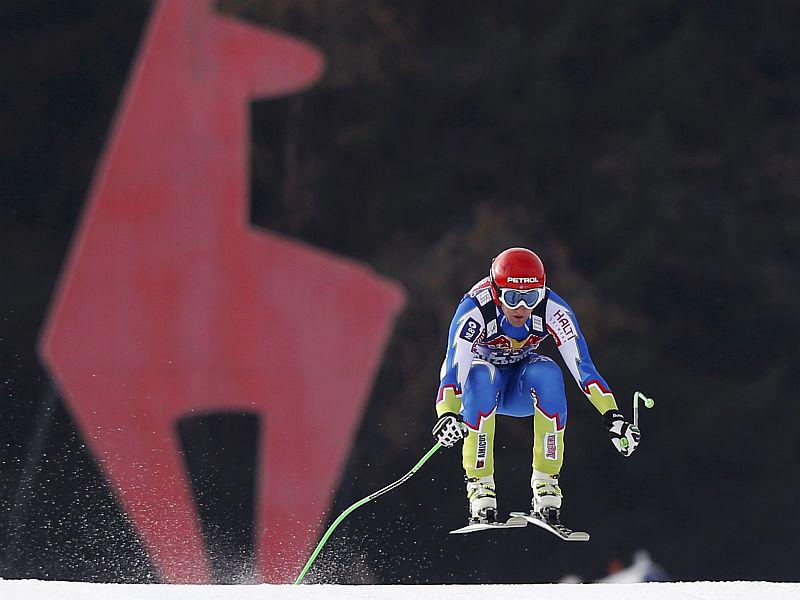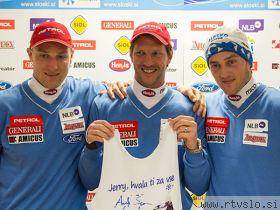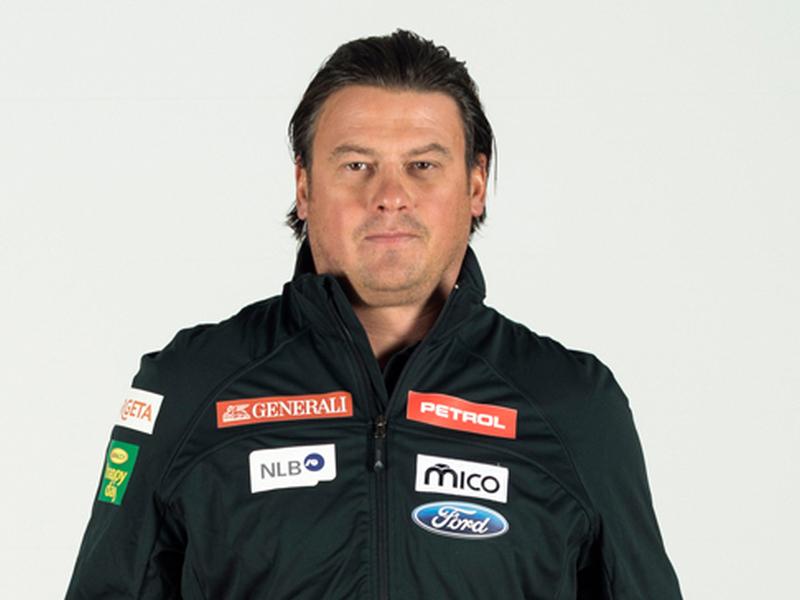
The Slovenian fast disciplines team is completing the last preparations for the races in Lake Louis (downhill race on Saturday, super giant slalom on Sunday) and Beaver Creek (super giant slalom, downhill, and giant slalom between December 5 and 7) in Copper Mountain. It was very cold, as the temperatures in Vail dropped to minus 27. In Lake Louis Klemen Kosi was the fastest at qualifications for the second starting position at super giant slalom, who will thus join Rok Perko who had already won a place in the team.



The second place at Streif in 2010 placed him on the podium of the most respected race in winter sports. Šporn places Kitzbühel above Olympic Games, or world championships. So it is obvious at which race he would prefer to excel in 2014/15 season. But the beginning of the season will be important as well, as good performances would allow him to come to Europe with good feelings. 32-year old skier from Kranjska Gora will start the season on Saturday, with the downhill race in Lake Louise, where he has never placed higher than the 14th place (four years ago).
You are quite optimistic before first races, although the last season was rather unsuccessful, as you won only 12 points in the world cup. What stands behind your optimism? Good training, new skis …?
Both. We are functioning quite well as a team with Andrej Jerman and the new trainer Peter Pen who brought a lot of positive energy. I trained a lot already in spring. As I remained at home during the Olympic Games, I changed my equipment, and chose Stöckli skis. In March and April I trained a lot, and the weather at home was very favourable, as it allowed good training at Krvavec; the terrain there is very suitable for training super giant slalom, and downhill.
Was the ski trail closed during your training?
Well, it was already late in April, and not many skiers were there. But it did happen once that, although all the other ski slopes were empty, a skier slipped below the fence and came directly to the track. Obviously he was not aware of the danger; I was coming downhill at the speed of 120 km/h.
In spite of financial problems you went to the USA before the beginning of the season for fast disciplines. It was of crucial importance, as 30 percent of all the races will take place in North America.
It would be very difficult to achieve good results without training.
Director of Slovenian Ski Association Jurij Žurej some days ago said that the competitors should be even more frugal with the money, e.g. they might have asked themselves whether it was really necessary to travel to Chile. Do you think that the summer training at the southern hemisphere was really necessary? After all, you did train there last year, but no good results were achieved…
Trainings at the southern hemisphere, and in North America, are crucial for preparations of the fast disciplines team. Europe simply does not have the suitable terrain, and you can’t spend an entire summer training just technique, as it would make you slow at the parts where sliding is required, if you are not used to speed. During this year’s preparation period the only quality training we got took place in Chile, and in Colorado, while the summer and autumn training in Europe brought us only contact with snow, but no real progress. The truth is also that training in South America was not much more expensive than comparable number of skiing days at European glaciers, while the quality is superior. All foreign teams which we would like to compete with, and defeat, in summer train in the south, some even go to several places – without it we would simply fall behind even before the beginning of the season.
You had some difficulty adapting to the American snow in the past seasons. Do you expect to fare better this year?
I believe so. The new equipment gives me hope as well. Stöckli made a lot of tests on the American snow in the past years. I am comfortable on these skis, and I have noticed a progress.
Did the fact that you had to pay by yourself for most of the expenses during the preparation period give you additional motivation?
No. My motivation was optimal even before that, it would be impossible to have stronger motivation. I actually tried to think of that as little as possible, as it could quickly turn into a burden, and not additional motivation.
Were you bothered by the last season? What were the main reasons for the poor results?
It was not only one thing, but a number of things all of a sudden. Everything went wrong, and when you reach such a state there is simply no solution. When everybody else went to the Olympic Games, I worked on changing my equipment. In Kvitfjell, when I was already ready for a better result, the conditions made it impossible to do much with a high starting number.
But you didn’t give up and end your career. How come?
I know I am capable of achieving much more, even the podium of the world cup. If I were not convinced about it, I would not continue.
Is Kitzbühel again your main goal?
I still consider it the greatest downhill race. In my opinion World Championship races don’t differ much from other races; it’s what I believe and don’t see why I should change that. Of course, I would like to win a large number of points in Ski World Cup.
So your dream of having your name written on one of gondola cars to Hahnenkamm remains alive?
By all means. I would love to get my gondola.
Luckily you had no problems with injuries lately. Are you very careful, let’s say when playing football, to avoid the fate of the Norvegian skier Aksl Lund, who was injured while playing football?
Well, it was not really a match – he was just kicking the ball. Well, it can happen at home, while coming downstairs to fetch some potatoes. You can’t just lie in order to avoid injury. I play hockey a lot, but luckily with former hockey players. Hockey is not a dangerous sport, it causes no problems to your ankles, and back. But I must say I suffered from a slight back injury these days, so I had to skip a day of downhill training. But it is improving, also thanks to the physiotherapist of the Swedish team, as we don’t have our own due to financial limitations. I am quite sure the reason for my back problems is the fact that we don’t have the advantage of constant work with a physiotherapist. I hope the pain will be gone before the race, and that I will be able to show my capability at the very beginning of the season.
Your former trainer Janez Šmitek once said that after a skier gets a child, he stops risking as much as before. Do you think it applies to you too?
Well, I don’t think it will make any difference in my skiing. The fact is that I have been having problems in certain weather conditions, especially in poor visibility, but it got better. The fact that I have a child does not influence my skiing. In the opposite case I would have stopped racing.
The Slovenian fast disciplines team is completing the last preparations for the races in Lake Louis (downhill race on Saturday, super giant slalom on Sunday) and Beaver Creek (super giant slalom, downhill, and giant slalom between December 5 and 7) in Copper Mountain. It was very cold, as the temperatures in Vail dropped to minus 27. In Lake Louis Klemen Kosi was the fastest at qualifications for the second starting position at super giant slalom, who will thus join Rok Perko who had already won a place in the team.

































































